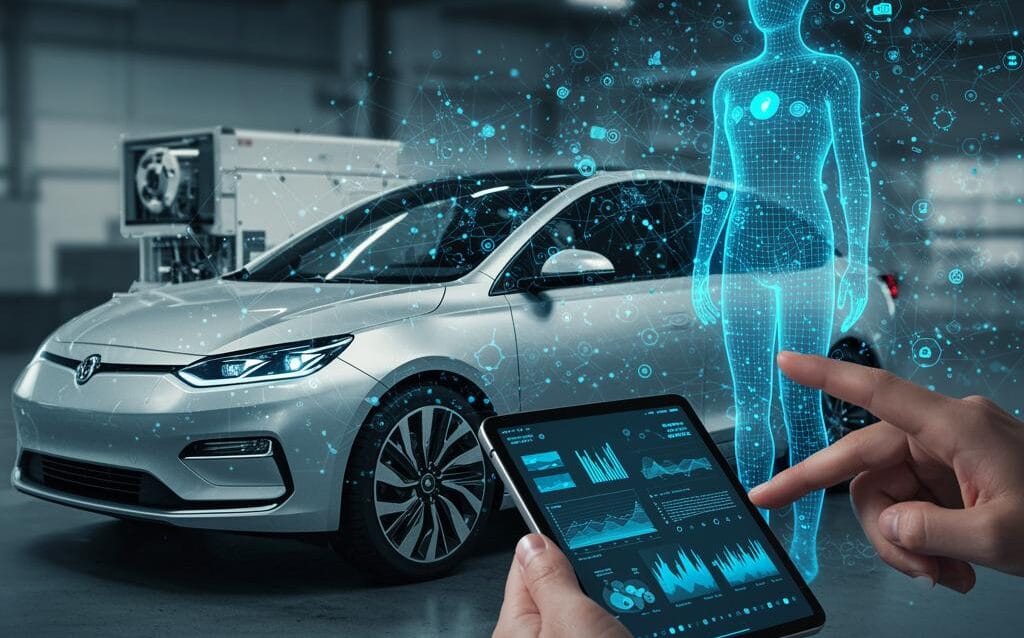Digital Twins: Use Cases for Physical Product Implementation
Digital Twins: Implementation Use Cases for Physical Products
The concept of a Digital Twin, a virtual representation of a physical asset, is rapidly transforming industries. It’s more than just a 3D model; it’s a dynamic, evolving reflection that mirrors the real-world object throughout its lifecycle. This blog post explores practical implementation use cases for digital twins related to physical products, demonstrating how they drive efficiency, reduce costs, and unlock innovation.
Understanding the Core Benefits of Digital Twins
Before diving into specific use cases, it’s crucial to understand the core advantages a digital twin offers:
- Improved Monitoring and Predictive Maintenance: Real-time data streams from sensors allow for continuous monitoring and prediction of potential failures.
- Enhanced Product Design and Development: Virtual prototypes can be tested and refined extensively before physical production, reducing errors and accelerating development cycles.
- Optimized Operations and Performance: Digital twins provide insights into how products perform in various conditions, enabling optimization for efficiency and output.
- Reduced Downtime and Increased Productivity: Proactive maintenance and optimized performance translate to less downtime and higher overall productivity.
- Data-Driven Decision Making: The wealth of data generated by digital twins empowers informed decision-making across all stages of the product lifecycle.
Use Case 1: Predictive Maintenance in Manufacturing
Optimizing Equipment Uptime with Real-Time Data
In manufacturing, downtime can be incredibly costly. Digital twins, integrated with IoT sensors on machinery, provide real-time data on temperature, vibration, pressure, and other critical parameters. This data is then analyzed using machine learning algorithms to predict potential failures before they occur.
Example: A digital twin of a robotic arm in an automotive assembly line monitors the motor’s temperature. If the temperature starts to rise beyond a certain threshold, the system automatically triggers a maintenance alert, allowing technicians to address the issue before the motor fails and halts production.
Benefits of Predictive Maintenance using Digital Twins:
- Reduced unexpected downtime.
- Lower maintenance costs by focusing on necessary repairs.
- Extended equipment lifespan.
- Improved overall equipment effectiveness (OEE).
Use Case 2: Product Design and Simulation
Virtual Prototyping for Faster Innovation
Digital twins revolutionize product design by enabling extensive virtual prototyping. Engineers can create a digital replica of a product and subject it to various simulations – stress tests, thermal analysis, aerodynamic simulations – all within a virtual environment.
Example: An aerospace company uses a digital twin of a new aircraft wing design to simulate its performance under different flight conditions. This allows them to identify potential weaknesses and optimize the design for maximum efficiency and safety before building a physical prototype.
Advantages of Digital Twin-Driven Design:
- Reduced reliance on physical prototypes, saving time and resources.
- Early identification of design flaws and potential issues.
- Faster time-to-market for new products.
- Improved product performance and reliability.
Use Case 3: Optimizing Supply Chain and Logistics
Tracking and Managing Products in Real-Time
Digital twins extend beyond individual products to encompass entire supply chains. By creating digital representations of products, transportation vehicles, and warehouses, companies can gain real-time visibility into the movement of goods and optimize logistics operations.
Example: A pharmaceutical company uses digital twins to track the temperature and humidity of vaccine shipments in real-time. If a shipment deviates from the required temperature range, alerts are triggered, allowing the company to take corrective action and prevent spoilage.
Benefits of Supply Chain Optimization with Digital Twins:
- Improved supply chain visibility.
- Reduced transportation costs.
- Minimized product loss due to damage or spoilage.
- Enhanced supply chain resilience.
Use Case 4: Enhancing Customer Experience with Personalized Services
Data-Driven Personalization and Support
Digital twins can be used to provide personalized services and support to customers. By collecting data on how customers use a product, companies can gain insights into their individual needs and preferences.
Example: A manufacturer of home appliances uses digital twins to monitor the usage patterns of its washing machines. If a customer is consistently using a particular wash cycle, the company can offer personalized tips and recommendations to help them optimize their laundry routine and extend the lifespan of their machine.
Improving Customer Satisfaction through Digital Twins:
- Personalized product recommendations and support.
- Proactive identification of potential issues.
- Improved customer satisfaction and loyalty.
- Opportunity to develop new services and revenue streams.
Conclusion
Digital twins are poised to revolutionize how we design, manufacture, operate, and maintain physical products. By leveraging the power of real-time data, simulation, and analytics, companies can unlock significant benefits across various industries. While implementation requires careful planning and investment, the potential returns in terms of efficiency, cost savings, and innovation are substantial. As technology continues to advance, the adoption of digital twins will only accelerate, making it a critical strategic imperative for businesses looking to stay ahead of the curve.

